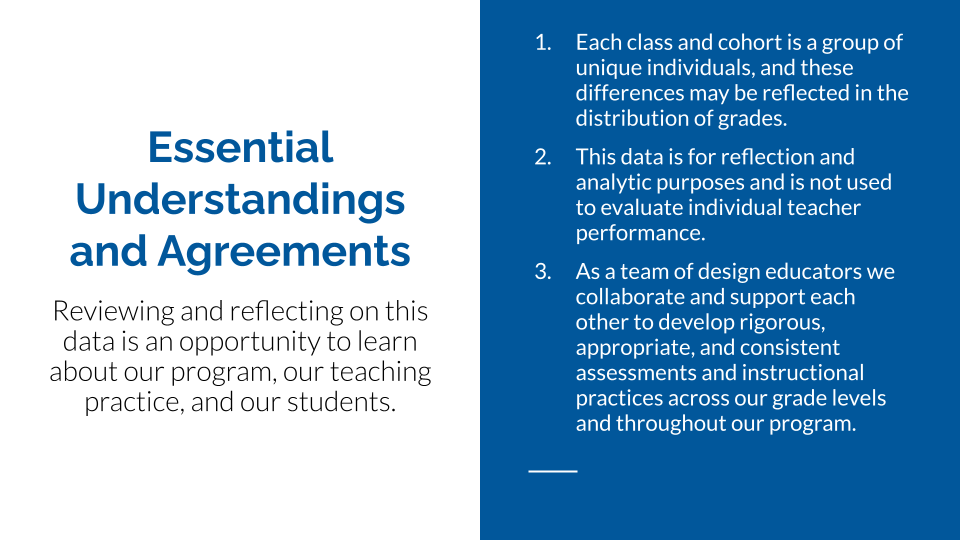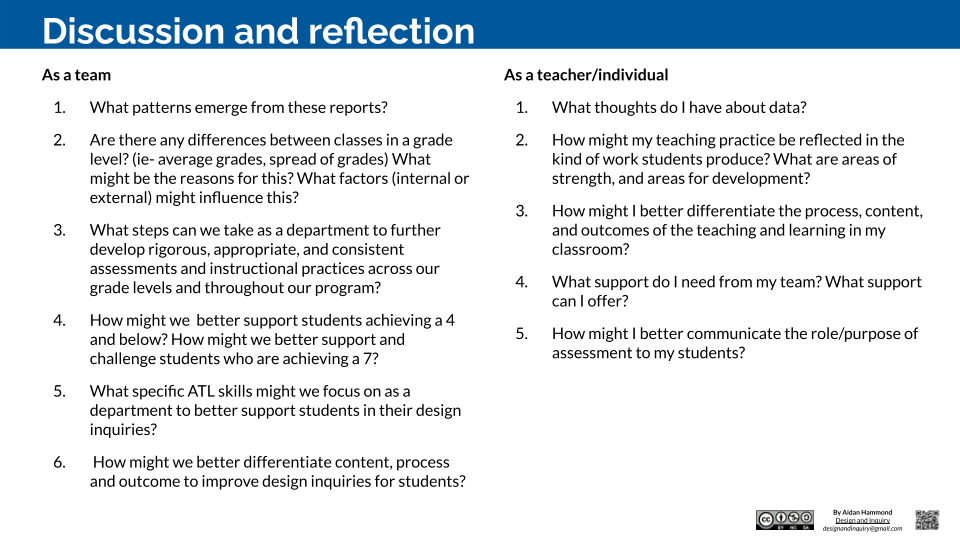Assessment across a large design program As our Design team has grown over the years, consistency in our assessment practices has become more important. To that end, we have begun to use a protocol for in reviewing our assessment outcomes and feeding back this analysis into our review of our program.
Our program has always been in a state of continuous evolution and iteration, particularly as year on year students enter our MYP Year 1 (grade 6) with more advanced skills and deeper understandings of design thinking and coding. It has become important for us to regularly evaluate our units and assessments according to the following criteria:
Appropriateness: Ensuring that assessments are appropriate for the grade level and design subject objectives:
Are the assessments relevant to the unit of inquiry?
Consistency: Ensuring objectives, assessments, approaches to learning (ATLs) and learning outcomes are aligned and consistent across a grade level.
Are the same objectives being taught and assessed?
Are the same assessment practices and expectations being applied across all classes in a grade level?
Is there a consistent level of differentiation being applied?
Rigor: Ensuring assessments provide an appropriate level of rigor and challenge for students.
To what degree can the assessments be differentiated in process, outcome, and content to allow all students to demonstrate their knowledge, understanding and skills.
Are the assessments an appropriate level of challenge for the grade level?
Do the assessments build upon each other to provide students opportunities for growth?
Instructional strategies: Reviewing and developing our instructional strategies to ensure they develop and support the assessment goals, and develop the identified conceptual understandings, and help students attain the objectives.
Do our strategies reflect and support development of conceptual understandings, and do they allow us to assess student understanding of these concepts?
Do our strategies support students for success on the summative task?
Do we provide opportunities for differentiation and the development of ATL skills to support success on the summative task?
Essential and shared understandings about assessment
Opening up our gradebooks and sharing our assessment practices is an important way to reflect and learn about our teaching practice. In a program with multiple teachers for each grade level, being able to share our practice and get feedback on what is happening in our individual classrooms helps us as a team develop a more appropriate, rigorous, and consistent assessment standards.
Analysis and Reflection
We organized our analysis and reflection into two perspectives:
Department and grade level: As a department or grade level team, this leads to consistency across the grades in the department, as well a sense of shared and common purpose in what we do. We can look more closely at the units, the teaching and learning that takes place to support the students, and how we structure the learning to assess in an appropriate and consistent manner,
Individual: As an individual it is valuable to reflect on our own teaching practices and identify areas of strengths and growth.
To these ends, we used the following guiding questions to help us understand and engage with our assessments, data, and approaches to teaching.
Our latest reviews together as a team have helped us identify some areas for development, particularly as they relate to rigor of assessments, the kinds of support and exemplars we provide, and most importantly, helped underscore the importance of moderation across classes.
If you would like to try this with your team, I have linked to the document I developed to guide our discussion and analysis. Feedback and thoughts are always welcome.


